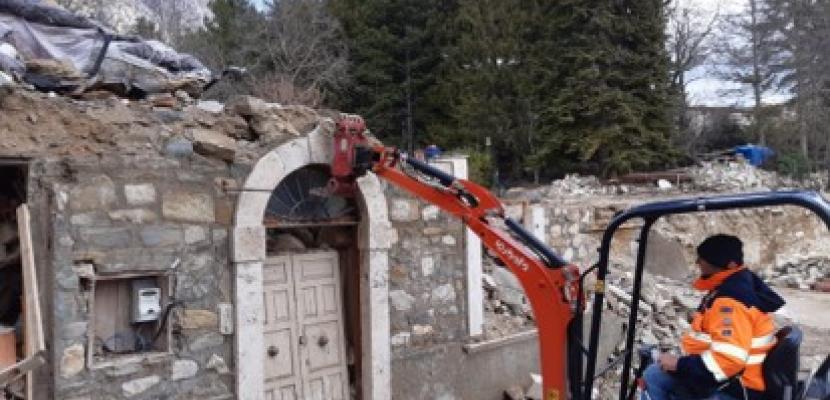Image

Reuse of natural stone materials from demolition following the 2016 earthquake
Published on 04 February 2021

Italy
Marche
This is the good practice's implementation level. It can be national, regional or local.
About this good practice
In the Marche Region, following the earthquake of 2016, serious damage was caused to the historical and artistic heritage. There is now great interest in rebuilding historic villages and the renovation of valuable buildings using energy efficient technologies and, above all, reusing natural stones and bricks in order to respect and enhance the identity of the territory, subject to historical landscape protection. The practice was developed through specific procedures set up by the implementing party and the Ministry of Cultural Heritage (MIBAC). Operationally, specialized operators supported the concessionaire. As far as all the other materials are concerned, both affective and salvage, the activities of demolition, securing and controlled dismantling have implemented all the necessary actions to recover, set aside and catalogue everything possible for reuse. Different documentation signed by the owners accompanies each practice of rubble removal, relating declarations of presence and possibility of recovery assets. By Decree of the Actuator of the 2016 Earthquake, COSMARI, a public company comprising 55 municipalities in the province of Macerata with a population of around 340,000 inhab., was entrusted with the Service Concession for the collection of rubble and material resulting from the collapse of buildings and demolition activities from the areas of the 87 municipalities in 3 provinces falling within the crater. Beneficiaries: local PA, SMEs, citizens.
Expert opinion
Post-disaster construction and demolition waste management is a crucial component of disaster recovery. To increase the sustainability and resource-efficiency of this process, options to reuse debris for the reconstruction should be considered as much as possible, provided of course that this is combined with the thorough implementation of anti-seismic, energy and resource efficiency measures in new buildings. As indicated by this good practice, selecting for reuse stones from damaged buildings can contribute to preserving elements of the cultural heritage and identity while contributing to the transition towards the circular economy at local level.
Resources needed
Cosmari proceeds to make specific monthly financial reports to Marche Region from about € 40.000,00 (max) to about €7.000,00 (Jan 2021 - minimum) to reiburse cost of mechanical equipment, labour, transportation of pallets.
Evidence of success
- Reducing the resource and energy impact of rebuilding;
- Less need to draw from raw materials;
- Reduce the impacts of transporting materials (part of the selected elements is left on the site, as requested by the owners);
- Keep the characteristics and traits of the sites ensuring visual identity respecting the normative on PROTECTION OF CULTURAL HERITAGE AND LANDSCAPE;
- maximize reuse;
- minimize recycling and landfill.
- Less need to draw from raw materials;
- Reduce the impacts of transporting materials (part of the selected elements is left on the site, as requested by the owners);
- Keep the characteristics and traits of the sites ensuring visual identity respecting the normative on PROTECTION OF CULTURAL HERITAGE AND LANDSCAPE;
- maximize reuse;
- minimize recycling and landfill.
Potential for learning or transfer
The area affected by the 2016 earthquake is made up of small villages with buildings made with natural stones (NS) of local extraction. There is a historical and cultural link between the buildings, the use (and REUSE) of NS and the lithology present in the area (limestone, sandstone, travertine, river pebbles, etc.) belonging to buildings no longer in use. Law already preserves ornamental stones. The re-use of NS and materials resulting from "selective demolition" (bricks, tiles, natural wood beams) must be specifically provided in a “deconstruction” project. So the sense of reusing NS should be extended to all NS and materials that constitute the soul of the places. The concept is to separate materials by design (as much as possible before demolition) to exclude them immediately from the attribution of a waste code not consider them as waste. This could be part of a planning perspective. The sense is to consider the reuse project before the demolition.
Further information
Website
Good practice owner
You can contact the good practice owner below for more detailed information.
Organisation
COSMARI SRL

Italy
Marche
Contact
Architect